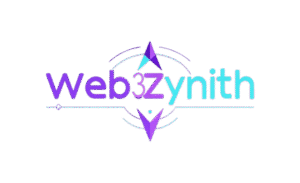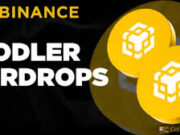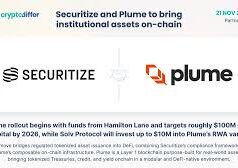When it comes to staking in crypto, most of us expect smooth sailing—steady APYs, dashboards ticking upward, and a sense of safety that our funds are at work. Yet, on September 29, 2025, GensoKishi Online’s USDT staking system hit an unexpected glitch. Interest calculations froze, balances looked erratic, and the community buzzed with concern. Fortunately, the GensoKishi team quickly confirmed there were no losses, assured users that a fix was underway, and set October 7 as the recovery deadline (GensoKishi Official News).
This incident offers an important reminder: even established GameFi projects are not immune to technical hiccups. Let’s break down what happened, why it matters, and how GensoKishi is turning this challenge into an opportunity for stronger transparency and resilience.
GensoKishi 101: From Elemental Knights to Web3 Warriors
To understand why this glitch drew so much attention, it’s worth revisiting the project’s roots. GensoKishi Online is the blockchain adaptation of Elemental Knights Online, a mobile RPG released in 2012 that achieved over 8 million downloads and even won Taiwan’s “Gold Award for Game of the Year” (CoinMarketCap).
By 2021, the developers at Fourthverse transitioned the title into a Web3-powered metaverse, hosted on Polygon for scalability. The project combines RPG-style quests and guild battles with NFTs, allowing players to trade characters, weapons, and lands. Importantly, it introduced a dual-token economy:
- MV Token – Used for governance, giving players voting power over ecosystem decisions, tokenomics tweaks, and game upgrades.
- ROND Token – Serves as the in-game transactional currency, pegged for seamless purchases in the marketplace.
To further enhance the ecosystem, GensoKishi integrated USDT staking in 2025, offering a relatively low-risk, stable yield option of 4–6% APY. This move drew in not just gamers but also DeFi enthusiasts who wanted consistent returns with less exposure to volatility. By Q3 2025, total value locked (TVL) surpassed $2.5 million (DeFiLlama).
The staking pools were well-received, cementing GensoKishi’s role as one of the most popular blockchain RPGs with more than 500,000 community members across platforms.
The Bug That Sparked September 29 Chaos
On September 29, stakers logged into their dashboards expecting daily accruals but instead saw an error message: “Calculation Error: Invalid Accrual Rate.” The GensoKishi team confirmed shortly after that the issue stemmed from a glitch in the smart contract managing USDT staking rewards (Medium: GensoKishi Updates).
According to their advisory, the error was caused by a faulty update to reward distribution logic, compounded by network congestion on Polygon. In plain terms, the system began miscounting reward epochs, causing yields to freeze. Importantly, MV and ROND staking pools remained unaffected.
The bug triggered concern across platforms like Reddit and X (Twitter), where users voiced fears of a rug pull. One Reddit user wrote: “My $5K USDT shows 0% yield—is this project over?” Fortunately, the team quickly clarified that principal funds were safe, deposits had been paused to prevent cascading issues, and an external audit by PeckShield was already in motion (PeckShield Audit Reports).
Why Withdrawals Were Paused
The most frustrating part for many users has been the temporary freeze on withdrawals. Why did GensoKishi ask stakers to hold off? The logic is straightforward: pulling funds during the recalculation process could destabilize the pool and create unnecessary errors.
Instead, the team opted for a snapshot recalculation approach. All affected wallets (an estimated 10,000+) will be credited retroactively for missed yields between September 29 and October 7. To soften the wait, GensoKishi promised a 2% APY bonus for those who kept their funds locked during the downtime (GensoKishi Staking DApp).
From a risk-management perspective, this decision reflects an effort to protect the entire pool rather than enable piecemeal exits. For stakers, it’s a reminder that even “safe harbor” assets like USDT are not immune to contract risks.
The Recovery Roadmap: October 7 Fix
The team has committed to fully resolving the glitch by October 7, 2025. The process includes:
- Deploying a patched smart contract with corrected reward logic.
- Running simulations on testnet before migrating to Polygon mainnet.
- Recalculating yields and automatically crediting wallets without user intervention.
- Publishing a post-mortem report on October 8 for transparency and technical accountability.
In a Telegram town hall, co-founder Hiroki Tokuda emphasized that the glitch has been a “stress test” and that the project will implement stronger safeguards, including multi-sig approvals for contract upgrades and AI-powered anomaly detection tools.
Community Response: From Panic to Praise
The initial panic was intense, but sentiment shifted once GensoKishi demonstrated transparency. Community forums that first screamed “rug pull” soon pivoted to appreciation.
One X user, @GameFiGuru, wrote: “Props to GensoKishi for addressing this head-on. Compare this to the Aave flash loan fiasco in 2024, where silence dragged on for weeks.”
Polls within Discord show that 70% of current stakers plan to remain in the pools after the fix, especially given the promised APY bonus and the team’s swift communication. The episode is already being compared to Axie Infinity’s Ronin hack or the Optimism bridge freeze in 2023—moments that tested community trust but ultimately strengthened ecosystems.
Lessons Learned: Smarter Staking in GameFi
For investors and players alike, this hiccup provides several takeaways:
- Diversify staking pools – Never rely on a single project, no matter how polished it seems.
- Use monitoring tools – Platforms like DeFiLlama help track TVL shifts and unusual activity.
- Expect glitches – Even audited contracts can fail. GensoKishi had passed a Certik audit earlier in 2025, yet the bug still surfaced.
- Patience pays – Immediate withdrawals in panic mode often result in missed recovery benefits.
As USDT staking grows globally (TVL has risen 40% year-over-year in 2025), these lessons are critical for balancing opportunity with caution.
Looking Ahead: Why GensoKishi Remains a Strong Bet
While the September 29 glitch is a setback, it’s unlikely to derail GensoKishi’s momentum. The project continues to innovate, with upcoming events, NFT land sales, and expanded gameplay features. Player activity dipped briefly after the glitch but quickly recovered as transparency reassured the community.
The October fix, combined with goodwill measures like the APY bonus and a planned “Glitch Guild” bug-hunt event, is transforming a potential crisis into an opportunity to build resilience.
For long-term believers, this is less a fatal flaw and more a battle scar that proves GensoKishi’s adaptability in the ever-evolving GameFi arena. As Tokuda put it: “Errors are inevitable; evolution is optional. We choose evolution.”
Final Thoughts
Technical errors happen—even in the best-designed ecosystems. What defines a project’s future is not the absence of glitches but the transparency and speed with which they’re resolved. GensoKishi has demonstrated both, reinforcing trust in its community-driven metaverse.
For those who stayed staked, the upcoming recalculations and bonus APY will make the wait worthwhile. For newcomers, the post-glitch recovery phase could present an opportunity to enter an ecosystem that just proved its resilience.
In GameFi, transparency isn’t just good practice—it’s a survival tool. GensoKishi’s approach shows it’s here for the long run.
Sources:
- GensoKishi Official News
- GensoKishi Staking DApp
- CoinMarketCap GensoKishi (GENSO)
- Medium: GensoKishi Updates
- PeckShield Audit Reports
- DeFiLlama GensoKishi TVL



























